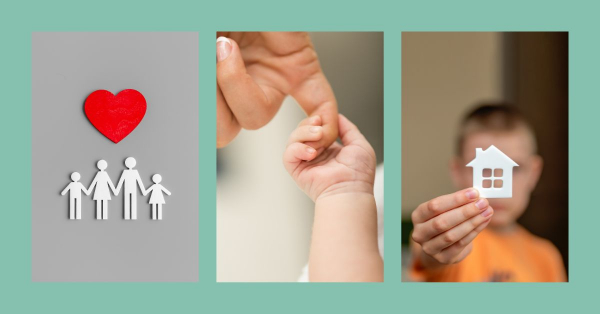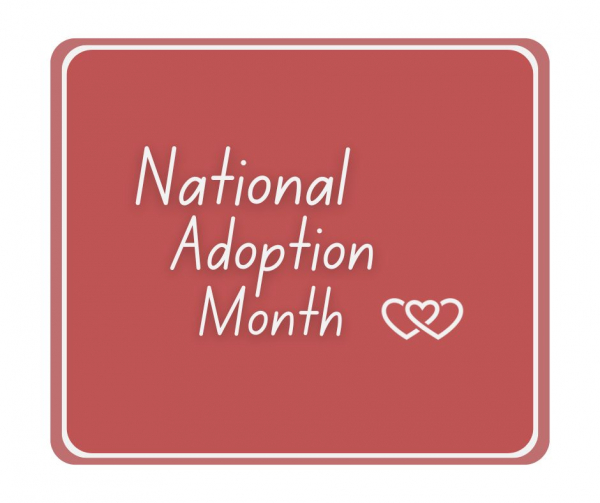Foster Care and Adoption
Adoption and foster care both focus on helping children in need, but they’re not the same thing. Knowing how each works is important for anyone who wants to help kids.
- Understand the difference between adoption and foster care
- Learn how foster care operates and supports children
- Explore the steps required before a child becomes eligible for adoption
- Discover ways to support children in foster care
- Recognize the importance of using respectful and considerate language.
What’s Adoption? What’s Foster Care?
Adoption is a permanent legal process where a child becomes part of a new family forever. When someone adopts a child, they take on all the rights and responsibilities of being the child’s parent.
Foster care, on the other hand, is a temporary arrangement. Kids are placed in foster care when it’s not safe for them to stay with their biological family. While in foster care, kids live with foster families or relatives who can take care of them. Most of the time, the goal is for the child to reunite with their biological family after the family gets the support they need. If that doesn’t happen, the child might become eligible for adoption.
How Does Foster Care Work?
Foster care provides a safe place for kids when their home life isn’t safe. Here’s how it works:
1. Removal and Placement
If a child is in danger at home because of abuse, neglect, or other serious problems, Child Protective Services (CPS) may step in. The child is placed with a foster family, a relative, or in a group home.
2. Reunification Efforts
CPS works with the child’s biological family to fix the issues that made the home unsafe. This could mean offering counseling, parenting classes, or other resources. The main goal is usually to reunite the child with their family.
3. Termination of Parental Rights (TPR)
If the family cannot provide a safe home, the court may decide to terminate the parents’ legal rights. This is a serious step, and it only happens after the family has been given time and support to make changes.
4. Adoption Eligibility
After TPR, the child is legally eligible to be adopted. Agencies and organizations, like the Heart Gallery of North Texas, help connect these kids with families who want to adopt.
Using Kind and Respectful Adoption Language
It’s important to use sensitive and respectful words when talking about adoption and foster care. Some words or phrases can hurt feelings or make kids and families feel judged. Here’s how to talk about adoption in a kind way:
- Say “placed for adoption” instead of “gave up for adoption.” The first phrase shows care and thought; the second might sound like the child wasn’t valued.
- Say “birth parents” or “biological parents” instead of “real parents.” All parents are real.
- Say “adoption plan” instead of “put up for adoption.” Making an adoption plan reflects the complex process adoption can be.
- Say “a child who was adopted” instead of “an adopted child.” This shows adoption is part of their story but doesn’t define them entirely.
Using these phrases shows that you care about the feelings of everyone involved in adoption.
What Has to Happen Before a Child Can Be Adopted?
For a child in foster care to become eligible for adoption, these steps have to happen:
The Goal Changes
At first, the goal of foster care is to reunite the child with their family. This only changes if the biological parents cannot make their home safe after getting help.
Termination of Parental Rights (TPR)
The court must decide it’s in the child’s best interest to terminate the biological parents’ rights. This allows the child to move forward with adoption.
Finding an Adoptive Family
Once a child is eligible for adoption, agencies and programs work to find a forever family. Some children wait longer to find a family, especially older kids and sibling groups.
Myths About Foster Care and Adoption
There are a lot of misunderstandings about foster care and adoption. Let’s clear up some of the biggest myths:
Myth 1: “Kids in foster care are bad.”
Not true. Kids in foster care are just kids. They’ve gone through hard experiences, but with love, stability, and support, they can heal and thrive.
Myth 2: “Only married couples can adopt or foster.”
Wrong! Single people, married couples, and people from all backgrounds can foster or adopt. What matters most is that you can provide a safe and loving home.
Myth 3: “Fostering is for people who want to adopt.”
Fostering isn’t always about adoption. Many foster parents focus on helping kids reunite with their families.
Myth 4: “Foster parents make money off fostering.”
Foster parents receive financial help from the state to cover the child’s basic needs, but fostering is not a job or a way to earn income.
The Heart Gallery of North Texas
The Heart Gallery of North Texas is an organization that helps children in foster care find adoptive families. They use professional photos and videos to show the personalities and stories of kids who are waiting for their forever families.
What They Do:
- Photo Galleries: They take portraits of children who are eligible for adoption. These portraits are shared online, in communities, and at local events.
- Videos: Videos give a deeper look into the child’s life, hobbies, and dreams.
- Raising Awareness: The Heart Gallery brings attention to the need for adoptive families, especially for older kids and siblings.
Finding a forever family can be harder for kids who are older, have siblings, or have special needs. The Heart Gallery helps connect these kids with families who might not have considered adoption before.
How You Can Help
If you want to make a difference in the lives of children in foster care, here are some ways to get involved:
- Volunteer: Help out at agencies or organizations like the Heart Gallery.
- Donate: Your donations can provide important resources for kids in foster care.
- Advocate: Share accurate information about foster care and adoption to help educate others.
- Support Foster Families: Offer meals, babysitting, or emotional support to foster parents in your community.
Every Child Deserves a Loving Home
Adoption and foster care may have different goals, but both exist to give kids a safe, loving environment where they can thrive. By understanding how foster care works, using respectful language, and supporting organizations like the Heart Gallery of North Texas, you can help make a difference in the lives of these kids.
Whether you’re ready to foster, adopt, or simply support the cause, your actions can change a child’s life forever. After all, every child deserves to feel safe, loved, and part of a family.
Read More
Adopted from Foster Care at 18: Meet Erik
“It is important for everyone to educate themselves on the foster care/adoption field. There are so many children that need love and support. If there are people that cannot adopt, then they can foster children. And if they cannot do that, then they can advocate for these vulnerable children. And if they cannot do that, then they can help educate themselves and support others in their endeavors of love. The point is that there is always something that can be done no matter your station in life. It does not have to be these grandiose acts, just look for opportunities to serve and help wherever possible.”
Ashley and Alo Adopted 6 Siblings from Foster Care
“There was no question in Ashley’s mind that she should parent either all or none of the six siblings who were attached. She said, ‘I knew what it meant to have someone who wasn’t your flesh and blood love you as though you were.’ After much thought and prayer, Alo and Ashley decided to parent a family of six—ages 17, 16, 15, 13, 4, and 6 months.”
Adopting a Teen from Foster Care
“…some people shy away from considering bringing a teen home. For us, adopting a teen from foster care was a calling. We cannot say it has been easy, but it most certainly has been worth it. She is worth it. It may have only been three years since she came home to us, but we will love and treasure her for a lifetime.”
How to Support Your Adopted Teen
Beyond the typical ups and downs of adolescence, adopted teens might struggle with unresolved feelings surrounding their adoption or things that happened before their adoption—no matter their age. Adoption trauma can manifest in various ways—feelings of loss, identity struggles, or questions about their biological roots.







